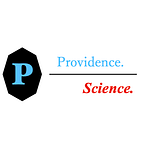Abstract Algebra: An Introduction to Groups
Written by Kevin Shi and Lloyd Wang
Reviewed by Sherlock Zeng
Categorization and Grouping
The notion of groups is weird and abstract. Its history is even more sophisticated. With that in mind, we “invent” groups from scratch, being motivated by simple mathematical principles. Note that this is not an accurate description of the origins of groups; you can find more about its history through an online search.
Mathematicians always like to have things in an abstract form. Abstraction brings simplicity: mathematicians can extract essential information, throw away unnecessary details, and summarize a variety of different concepts using one logical structure.
For instance, we abstracted quantities into numbers, and numbers could be used to describe all sorts of things. We have the set of integers, something that can be categorized into positive, negative, even, odd, prime, composite, etc. We add fractions and get rational numbers, add the limits of sequences and get the real numbers.
These numbers have similar properties: multiply by 1 to get themselves, multiply by 0 to get 0, and add 0 to also get themselves. In addition, they have the useful property that the square of any real number is positive, an elementary property which gives rise to a variety of concepts such as the trivial inequality and Cauchy-Schwartz.
Then we get quadratic equations. These naturally originate from models of mathematical physics, but they give us weird numbers: some of them do not belong to the real numbers, because their squares are not positive!
Consequently, we introduce imaginary numbers, and these are summarized (together with reals) as the set of complex numbers. It’s all good up till this point, but what about non-numbers?
You see, mathematics isn’t all about numbers: things like polygons, matrices, functions; these foundational concepts were not represented in this set of complex numbers. We already had the Cartesian coordinates, trigonometric functions and Euler’s formula to bridge the gap between numbers and geometry, but what about everything else?
Naturally, we would want a structure to summarize the common properties. We wish that it satisfies the following conditions:
- Have the “good” properties of integers (possibly the most natural mathematical concepts)
- Have operations that are not affected by order (i.e., they’re commutative)
- Invariant components like 0
- Everything has symmetry
A group (almost) satisfies these conditions.
The Definition of a Group
A group is an abstract mathematical concept, because only sufficiently abstract structures can extract a variety of common properties. A group consists of two parts: a set G of elements (which make up the group) and an operation * on these operations. In particular, * is a binary operation
In addition, a group also has to satisfy the following properties:
It has an identity element e such that for any g in G,
* is associative, such that for any elements a, b, c, they satisfy
Finally, any element g must have an inverse h, such that
It’s not hard to verify that the set of integers under addition and the set of nonzero rational numbers under multiplication are both examples of groups. Naturally, you would think that an operation is commutative, but we will show that not all groups have commutative operations. In particular, the special groups which do have this property are called Abelian groups (in memory of the mathematician Niels Abel).
As a side note, because mathematicians can be lazy, we’ll just omit the operation *. For specific cases, the operation * is typically evident.
Some Examples
Perhaps the concept of a group would be easier to understand if we used some examples:
- The set of complex numbers {1, -1, i, -i} is a group when equipped with the multiplication operation.
- The set of integers is not a group when equipped with multiplication. This show that whether a set forms a group not only depends on the elements of the set, but also the operation on that set.
- The set of integers modulo n consisting of {0, 1, 2, …, n - 1} forms a group under addition modulo n.
- The dihedral group of order 2n is the group of symmetries (containing rotations and reflections) of a regular n-gon. The operation in this case is the composition of arbitrary rotations and reflections. You should verify that this group is non-abelian.
Elementary Properties
Before you read the following section, play around with the definition of groups and see what you can find. Remember to think abstractly and try to not restrict yourself to specific examples.
Now we will show some common properties of general groups, along with their proofs.
(1) Every group has a unique identity element.
Proof: Assume that a group has two identity elements, call them e and e’. By definition, for any elements a, b in that group we always have ae = a and e’b = b. A specific instance of this is e’e = e’ and e’e = e, hence e = e’.
(2) Cancellation property: if a, b, c are elements of the same group, then the statements “a = b” and “ac = bc” are equivalent.
Proof: To prove that statement 1 implies statement 2, right-multiply (keep in mind non-abelian groups) by c on both sides. To prove that 2 implies 1, right-multiply by the inverse of c on both sides and use the associativity of groups.
As a side note, a = b and ca = cb are also equivalent.
(3) Every element of a group has a unique inverse.
Proof: Assume that g has two inverse elements h and h’, then gh = e = gh’. Applying the cancellation property to gh = gh’ yields the desired result.
We shall denote the unique identity by the number 1 and the inverse of an element g as
Now, we have a more useful property.
(4) Let G be a group and a, b elements of G. We have
Proof:
Finish off with the cancellation property.
